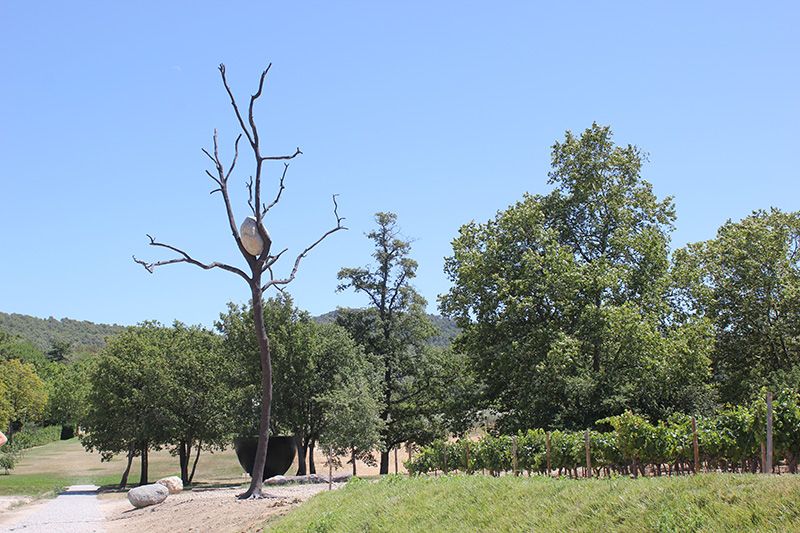ART-PRESENTATION: Giuseppe Penone
 Giuseppe Penone studied at the Accademia di Belle Arte in Turin where, he continues to live and work. Initially associated with “Arte Povera”, Penone has gone on to establish himself as one of the most important sculptors practicing today. His relation with nature and especially with the forest is obvious all over his work.
Giuseppe Penone studied at the Accademia di Belle Arte in Turin where, he continues to live and work. Initially associated with “Arte Povera”, Penone has gone on to establish himself as one of the most important sculptors practicing today. His relation with nature and especially with the forest is obvious all over his work.
By Dimitris Lempesis
Photo: Château La Coste Archive
Giuseppe Penone’s solo exhibition at Château La Coste is on presentation at the recently constructed gallery pavilion by Italian architect, Renzo Piano. Considering Piano’s design, the approach, and the surrounding landscape, Penone has carefully selected works that are presented both inside and outside the gallery, creating an overall dialogue between his artwork, architecture and nature. “What fascinates me about trees is their structure: the tree is a being that memorializes the feats of its existence in its very form. Similarly, our bodies could be considered the sum of the performance of our existence. The tree can be considered a metaphor for the work of a sculptor who fixes his actions in the material”. The tree is for him a sculpture of perfect structure that changes constantly. It is not solid but fluid, and this fluidity measures the time that the bronze fixes. Since the beginning of his career, Penone has made working with trees a central part of his practice. Through subtle interventions the artist isolates this familiar object that we take for granted and transforms it just enough to both retain its organic origins and display something that has been recognizably altered by man, an example is the work “In bilico” (2012). Penone chisels cedar trunks and masses of marble to expose the deep patterns resulting from growth and time, characteristics that he further emphasizes through carving, patination, and replication. In “Anatomia” (2011), a 23-ton marble block, he reconceives the veined surface as a matrix of tendrils, advancing the original marks into multiple dimensions. For the new Gallery of Château La Coste, Renzo Piano decided to carve a 6 meters deep valley in the earth so as to fully incorporate the building into the vineyard. The pure glazed façades and roof contrast with the simple exposed concrete used for both the retaining and the exhibition walls. The partly buried building highlights the roof covered with a sail fastened to thin metal arches. These arches echo the graphical layout of the grapevines, enabling to integrate the sail into the vineyard.
Info: Château La Coste, 2750 Route de la Cride, Le Puy Ste Réparade, Duration: 9/9-26/11/17, Days & Hours: Daily 11:00-18:00, https://chateau-la-coste.com


